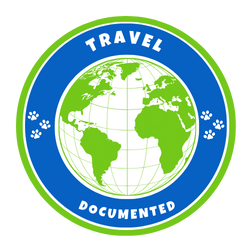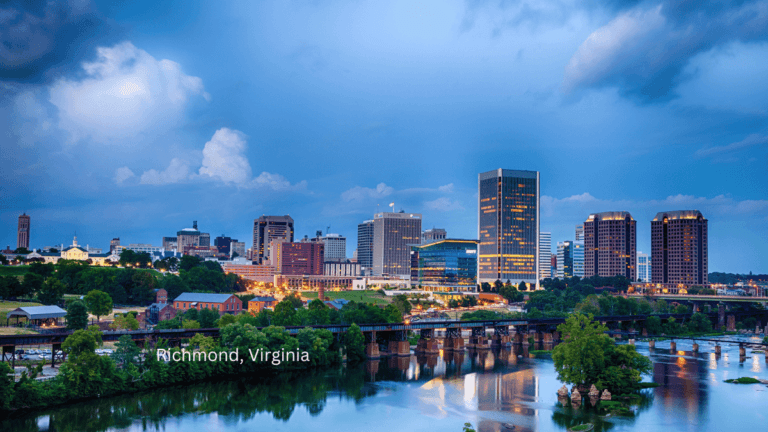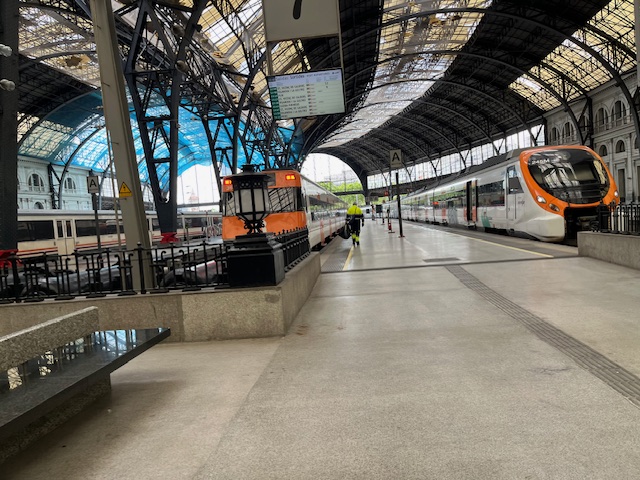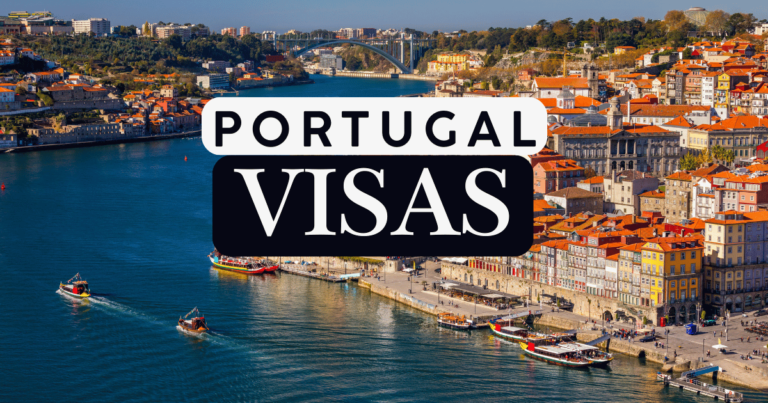7 Game-Changing Travel Conferences That Will Transform Your Career in 2026 Plus Insider Tips)
Discover the insider secrets to networking, learning, and landing opportunities at the world’s most influential travel industry events across Europe, Asia, and North America Walking into your first travel conference can feel overwhelming. Thousands of people mill around elaborate destination booths, business cards fly like confetti, and everyone seems…
Discover the insider secrets to networking, learning, and landing opportunities at the world’s most influential travel industry events across Europe, Asia, and North America
Walking into your first travel conference can feel overwhelming. Thousands of people mill around elaborate destination booths, business cards fly like confetti, and everyone seems to know exactly what they’re doing. This sensation hits newcomers and seasoned professionals alike when entering major industry events.
Travel conferences have the power to change careers completely. They lead to dream collaborations with tourism boards, lifelong professional relationships, and opportunities that seemed impossible before. Success at these gatherings has nothing to do with having the perfect elevator pitch and everything to do with genuine curiosity and authentic connections.
Whether you’re a travel blogger just starting out, a seasoned tourism professional, or someone dreaming of breaking into the industry, understanding how to navigate travel conferences can be the difference between watching opportunities pass by and actively creating your own luck.
Why Travel Conferences Matter More Than Ever
Here’s what most people don’t realize about travel conferences: the real magic happens in the quiet moments between sessions. That conversation over terrible conference center coffee might introduce you to your next business partner. The person sitting next to you during a panel discussion could become your mentor. The tourism board representative you chat with at the cocktail reception might invite you on a press trip that transforms your portfolio.
I’ve seen travel bloggers go from struggling to monetize their content to landing six-figure brand partnerships, all because they met the right person at the right conference. I’ve watched tourism professionals pivot entire destination marketing strategies based on insights gleaned from a single workshop. The travel industry runs on relationships, and conferences provide the most efficient way to build them.
But conferences offer more than networking opportunities. The travel landscape changes constantly. New destinations emerge, traveler preferences shift, and technology reshapes how we book, share, and experience travel. Staying current requires continuous learning, and conferences deliver concentrated doses of industry intelligence that would take months to gather independently.
Related: How Solo Travel Allows You to Find Your Strengths
Top Travel Conference Destinations by Region
Europe’s Premier Travel Events
Germany: Berlin hosts ITB Berlin (March annually), the world’s largest travel trade show with 180,000+ attendees from 180+ countries at Messe Berlin, Messedamm 22, 14055 Berlin.
United Kingdom: London’s ExCeL Convention Centre (1 Western Gateway, Royal Victoria Dock, London E16 1XL) welcomes 51,000+ professionals to World Travel Market each November.
Asia-Pacific Travel Conference Hub
Thailand: Bangkok serves as PATA’s headquarters at True Digital Park, hosting major Asia-Pacific tourism summits throughout the year.
Various Locations: TBEX Europe rotates between destinations like Dublin, Ireland and Mediterranean locations, attracting 500-700 content creators.
North American Travel Industry Events
United States: Las Vegas, Nevada dominates with IMEX America at Mandalay Bay Convention Center (3950 S Las Vegas Blvd, Las Vegas, NV 89119), drawing 15,800+ meetings industry professionals.
Canada: Quebec City and Toronto regularly host major travel conferences, with venues like Westin Harbour Castle Toronto providing intimate networking environments.
The 7 Types of Travel Conferences You Need to Know
1. Massive International Trade Shows (50,000+ Attendees)
Definition: Large-scale industry exhibitions where countries, tourism boards, and travel companies showcase destinations and services to a global audience.
These are the heavyweight champions of travel conferences. Think ITB Berlin at the Messe Berlin, the World Travel Market at ExCeL London, or IMEX America at the Las Vegas Convention Center. These events attract 50,000+ attendees from every corner of the travel industry. Walking the trade show floor feels like exploring a miniature world, with countries building elaborate pavilions and companies showcasing everything from luxury resorts to travel booking apps.
Best for: Tourism professionals, destination marketers, travel technology companies, and experienced travel writers seeking partnerships with major brands.
The scale can feel intimidating, but that’s exactly why these conferences work so well. Where else can you speak directly with representatives from 180+ countries in three days? The key is having a strategy. Don’t try to see everything. Pick your priority destinations or companies and focus your energy there.
2. Content Creator and Digital Marketing Conferences (500-1,000 Attendees)
Definition: Specialized events focusing on travel blogging, social media marketing, and digital content creation for the travel industry.
These events speak directly to travel bloggers, influencers, and content creators. TBEX (Travel Blog Exchange) leads this category, rotating between cities like Dublin, Manila, and Salt Lake City. The atmosphere feels more intimate and collaborative than massive trade shows, with sessions covering everything from Instagram algorithm changes to negotiating with tourism boards.
2025 TBEX Schedule:
- TBEX North America: Quebec City, Canada (June 16-19, 2025)
- TBEX Europe: Donegal, Ireland (September 9-12, 2025)
- TBEX Summit America: Wichita, Kansas (October 1-4, 2025)
Content creators appreciate these conferences because everyone understands the unique challenges of building an audience, creating compelling content, and turning passion into profit. The practical advice flows freely, and attendees genuinely want to help each other succeed. Plus, the photography walks and meetups create natural opportunities for collaboration and connection.
3. Sustainable and Responsible Travel Events
Definition: Conferences focused on environmental sustainability, community-based tourism, and responsible travel practices.
The Global Sustainable Tourism Council hosts events worldwide, while organizations like the Adventure Travel Trade Association focus on responsible outdoor recreation. These conferences tackle the industry’s most pressing challenges: overtourism, environmental impact, and community benefits.
Key Topics Covered:
- Carbon footprint reduction strategies
- Community-based tourism development
- Overtourism management solutions
- Sustainable accommodation practices
- Wildlife conservation through tourism
If you care about travel’s future, these events provide both inspiration and practical solutions. You’ll meet destination managers working to balance tourism growth with environmental protection, tour operators creating authentic cultural experiences, and travelers seeking meaningful connections with local communities.
4. Regional and Specialized Conferences
Definition: Focused events targeting specific geographic regions or travel market segments.
Sometimes the most valuable insights come from focused events. The Pacific Asia Travel Association (PATA) conferences rotate throughout Asia, offering deep dives into regional tourism trends. The Adventure Travel World Summit moves to adventure destinations like Lugano, Switzerland, or Anchorage, Alaska, combining education with experiential learning.
2025 Adventure Travel World Summit: Puerto Natales, Chile (October 13-16, 2025)
Luxury travel conferences like the Virtuoso Travel Week in Las Vegas attract high-end travel advisors and suppliers. These specialized events provide targeted networking and insights you won’t find at general industry conferences.
5. Technology and Innovation Conferences
The travel industry embraces technology enthusiastically, and events like the Travel Technology Europe in London or the Skift Global Forum in New York showcase emerging trends. These conferences explore how artificial intelligence changes booking experiences, how virtual reality influences destination marketing, and how blockchain technology might revolutionize travel payments.
Even if you’re not particularly tech-savvy, these events help you understand forces shaping the industry’s future. Early adoption of new tools and platforms can provide significant competitive advantages.
6. Accommodation-Specific Events
The International Hotel & Restaurant Association, Airbnb’s host conferences, and boutique hotel gatherings serve specific accommodation sectors. These events dive deep into operational challenges, guest experience trends, and revenue optimization strategies.
For travel writers, these conferences offer insider perspectives on hospitality trends that can inform your content and establish valuable relationships with hotel brands.
7. Adventure and Outdoor Recreation Conferences
The Outdoor Retailer shows in Denver, Colorado, and specialized adventure travel conferences bring together outfitters, gear manufacturers, and outdoor enthusiasts. These events showcase destinations and experiences perfect for active travelers and provide insights into the rapidly growing adventure tourism sector.
What Really Happens at Travel Conferences
Let me paint you a realistic picture of conference life. Your day typically starts early, often with a networking breakfast where everyone clutches coffee cups and exchanges pleasantries while secretly scanning name tags. The energy feels tentative at first, but enthusiasm builds as conversations flow.
Keynote presentations kick off most conferences, featuring industry luminaries sharing insights about market trends or inspirational stories. These sessions provide valuable context, but honestly, the question and answer periods often generate more practical insights than prepared remarks.
Panel discussions create some of the most valuable conference moments. Watching experts debate different approaches to overtourism management or discuss emerging destination trends reveals nuanced perspectives you won’t find in industry reports. The best panels feel like observing conversations between brilliant industry leaders.
Workshops and breakout sessions offer hands-on learning opportunities. Attendees learn Instagram photography techniques at social media workshops, practice storytelling approaches in writing sessions, and develop content strategies in small group settings. These interactive sessions provide immediately applicable skills and encourage deeper engagement than lecture-style presentations.
The trade show floor creates controlled chaos. Destination booths compete for attention with elaborate displays, virtual reality experiences, and cultural performances. Tourism board representatives stand ready to discuss partnership opportunities, while technology companies demonstrate new platforms and services. Walking these floors provides rapid market overviews and face-to-face access to decision-makers.
But here’s what conference brochures don’t tell you: the most valuable conversations happen during breaks, over meals, and at evening events. Those informal moments when guards drop and real insights emerge. The tourism professional who shares honest challenges facing their destination. The successful blogger who reveals their actual income and monetization strategies. The startup founder who explains what they wish they’d known before launching.
How to Actually Succeed at Travel Conferences
Success at travel conferences requires more strategy than most people realize. Your approach should begin weeks before arrival and continue long after departure.
Start by researching attendee lists when available. Most conferences provide mobile apps that include participant directories and messaging features. Identify priority connections and send brief introduction messages before arrival. This pre-conference outreach transforms random encounters into planned meetings.
Prepare multiple versions of your introduction depending on the audience. Tourism professionals want to understand your reach and audience demographics. Fellow travel bloggers care more about your content style and collaboration interests. Investors focus on your business model and growth trajectory. Practice these introductions until they feel natural, not rehearsed.
Set specific, measurable objectives for each conference. Instead of vague goals like “network with people,” establish concrete targets such as “connect with three Nordic tourism boards interested in blogger partnerships” or “learn about two new monetization strategies I can implement within 60 days.” Clear objectives help you allocate time effectively and measure success.
During the conference, balance structured sessions with informal interactions. While keynote presentations provide valuable insights, those hallway conversations often prove equally important. I’ve learned more about successful blogging strategies during lunch conversations than in formal presentations.
Take notes constantly, not just during sessions but after meaningful conversations. Conference information overload is real, and details fade quickly without documentation. Using voice memo functions to capture insights immediately after conversations, then transferring key points to a master conference document each evening, proves highly effective.
Master the art of graceful conversation exits. Conferences create time pressure, and monopolizing someone’s attention hurts both your relationship and their networking opportunities. After meaningful conversations, exchange contact information and suggest specific follow-up actions: “I’ll send you that media kit we discussed” or “Let’s schedule a call next week to explore collaboration opportunities.”
Related: How 400,000 Women are Reshaping the Travel Industry
The Follow-Up That Actually Matters
Here’s where most conference attendees fail: they collect business cards like souvenirs and never follow up meaningfully. Professional relationship building requires intentional cultivation, not just initial contact.
Send personalized follow-up messages within 48 hours while conversations remain fresh in memory. Reference specific discussion points to demonstrate genuine attention and interest. Instead of generic “nice meeting you” messages, write something like: “I loved your insights about sustainable tourism in Costa Rica. I’m particularly interested in the community-based tourism projects you mentioned.”
Share resources you promised during conversations and propose concrete next steps for promising connections. If you discussed potential collaboration opportunities, suggest specific timelines and deliverables. This proactive approach separates serious professionals from casual networkers.
Create a system for maintaining long-term relationships beyond initial conference connections. The travel industry thrives on relationships, and maintaining connections requires ongoing effort. Regular check-ins, sharing relevant articles, and offering assistance when appropriate help transform conference contacts into professional networks.
Making Your Conference Investment Pay Off
Travel conferences represent significant investments. Registration fees range from hundreds to thousands of dollars, plus travel costs, accommodation, and lost work time. However, the returns often far exceed initial investment when approached strategically.
Tracking conference ROI consistently shows surprising results. Direct business opportunities, partnership deals, and knowledge gained translate into measurable income increases. More importantly, the relationships forged at conferences create ongoing value that compounds over time.
Consider conferences as professional development investments rather than expenses. The connections made, knowledge gained, and opportunities discovered frequently generate long-term value that justifies short-term costs. Many travel professionals credit conference attendance with pivotal career moments, from landing dream jobs to forming successful business partnerships.
The Venues That Shape the Experience
Location significantly impacts conference dynamics and networking opportunities. The Venetian in Las Vegas creates different energy than the Convention Centre Dublin or the Cape Town International Convention Centre. Urban venues offer extensive dining and entertainment options that facilitate informal networking, while resort locations create more intimate, focused environments.
Conferences in smaller cities often generate stronger networking results because attendees spend more time together. When staying at the Westin Harbour Castle in Toronto for a conference, participants are likely eating meals and socializing with fellow attendees. This contrasts with conferences in cities like New York or London, where participants scatter across the city each evening.
The travel industry rewards those who stay connected, informed, and engaged with genuine passion rather than transactional networking. Travel conferences provide efficient pathways to achieve all three objectives while surrounded by people who share your enthusiasm for exploration and discovery.
Success comes from approaching these events with authentic curiosity, clear objectives, and commitment to building real relationships. Whether you’re attending your first conference as a wide-eyed newcomer or your fiftieth as a seasoned professional, each event offers opportunities to learn something valuable, meet someone interesting, and perhaps discover your next great adventure.
The question isn’t whether you can afford to attend travel conferences. The question is whether you can afford not to.










